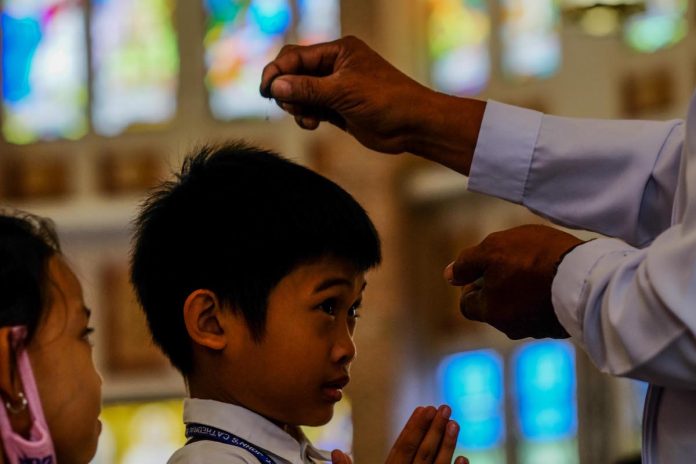Parishes in the Archdiocese of Manila that cannot secure palm from last year’s Palm Sunday celebration may use any dried leaves or plants for this year’s Ash Wednesday observance on February 17.
Bishop Broderick Pabillo, apostolic administrator of Manila, said the dried leaves can be burned and the ashes used to mark the foreheads or to sprinkle on the head of the faithful.
In a letter dated February 5, the prelate said those who will not be able to go to church for the observance may perform the burning of palm leaves or any dried leaves at home.
Bishop Pabillo said the Archdiocesan Liturgical Commission has already prepared guidelines for the burning of palms or leaves to ashes for dissemination to parishioners.
The guidelines include an instruction on how to distribute the ashes during the observance, including how priests sprinkle the ashes on the crown of the head of the faithful.
“The priest says the prayer for blessing the ashes. He sprinkles the ashes with holy water, without saying thing. Then he addresses all those present and only once says the formula as it appears in the Roman Missal, applying it to all in general: ‘Repent, and believe in the Gospel.’ or ‘Remember that you are dust, and to dust you shall return,'” read the guidelines.
“The priest then cleanses his hands, puts on a face mask and distributes the ashes to those who come to him or, if appropriate, he goes to those who are standing in their places. The priest takes the ashes and sprinkles them on the head of each one without saying anything,” it added.
Bishop Pabillo said the sprinkling of ashes on the crown gives the opportunity to “catechize our people on both the penitential and baptismal characters of the Lenten season.”
He said that during baptism, “we have been anointed on the crown of the head.”
“The ashes to be smeared on the crown signify our repentance from sin, which has marred the grace of baptism,” said the prelate.
Meanwhile, the bishop asked the faithful to support the “Fast2Feed” campaign of Hapag-Asa by donating whatever they saved from their fasting, abstinence, and other penances to the program.
“As we begin the season of Lent, we are reminded of the constant call for renewal in our Christian life by self-control (fasting and abstinence), generosity and charity (almsgiving) and prayer,” he said.
Ash Wednesday signifies the start of the Lenten season which is usually marked with fasting, prayer, and almsgiving.









